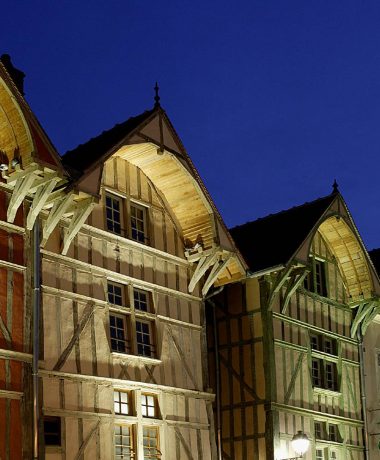(sólo en inglés)
It is fascinating to take a look at history to be able to realize that our world is far from being all-powerful face to the issues it has to go through. With the beginning of the Coronavirus since the end of 2019, we are living in an extraordinary reality, in its true meaning, easy to compare with a disaster blockbuster scenario written for Netflix.
Curfews, lockdowns, protective masks… war expressions that we would have never imagined to use nowadays.
However, 500 years ago, in 1518, Troyes had been devastated by the plague and the means used to fight the epidemic back then were somehow similar to those we use today.
The plague had already created huge damages on the whole Occidental world when it landed in Marseille on the 1st of November 1347.
And then, in Troyes, at the beginning of this century that would later be known as « the beautiful 16th century », « the sinister traveler » was there, everywhere around the city, unbeatable.
Black flags were hoisted everywhere at the top of ramparts and bell towers: misfortune could be seen from afar.
So, for the first time ever, a city council got organized. An emergency and prevention health policy was created, quite similar to our current “ARS” (Agence Régionale de Santé, or Regional Health Agency), but on a smaller scale. A plague controller was elected, and a certain number of drastic measures were decided.
A « house in the field » was quickly built in St Julien to welcome the contaminated « homeless ».
People took turn to watch the gates of the town, forbidding access to any individual or goods coming from contaminated areas.
At that time, old rags, wool and skins were suspected of spreading the epidemic, so the stocks were destroyed and the production stopped. Thus, the activity of so many tanners, papermakers and drapers had to cease. Misery increased.
The houses of sick people were marked with a white cross. Windows and doors, except one, were barred and studded. The contaminated person and his relatives were not allowed to leave the house under any circumstances.
The contaminated person and his relatives were not allowed to leave the house under any circumstances.
When they would die, their furniture and clothes were burnt.
Those in charge of burying them had to wear a red jacket, a stick and little bells to make sure no one would get close to them. This does not seem so far from our current app against the Covid…
Those who have been close to a patient carried a white stick, they were the « contact cases » of the time. Access to bakeries, butcher’s shops and churches was not allowed to them.
Funerals were forbidden and burials were carried out at night in secret.
Neighbourhoods with cases of the plague, our current « clusters », were isolated. Residents were not allowed to leave.
With the heat, the epidemic reached its peak during the summer months.
People in Troyes would get bunches of plants, as sage, rosemary or mint, that would, as it was said, keep the disease away, as does our hydroalcoholic gel.
Finally, in autumn, cures were more and more frequent, and the plague disappeared in November, as it had come.
It came back a few years later, in 1524.
1524 was a tragic year for the inhabitants of Troyes who also experienced the worst fire in their history.
Head and featured photo: Crow © Capri23auto


